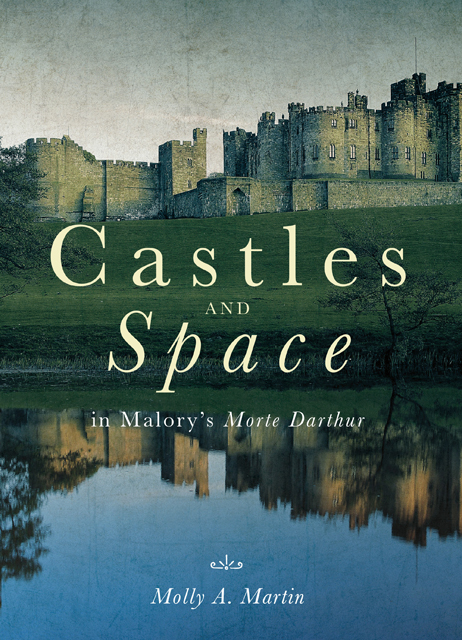Book contents
- Frontmatter
- Dedication
- Contents
- List of Plates
- Introduction: Into the Castle
- 1 Castles as Political Centers
- 2 Castles and Community Identity
- 3 Castles and Ritual
- 4 Castles and the Domestic Sphere
- 5 Castles as Prisons
- 6 Castles at War
- Afterword: Beyond the Castle Gate
- Bibliography
- Acknowledgements
- Index
- Arthurian Studies
Afterword: Beyond the Castle Gate
Published online by Cambridge University Press: 20 January 2023
- Frontmatter
- Dedication
- Contents
- List of Plates
- Introduction: Into the Castle
- 1 Castles as Political Centers
- 2 Castles and Community Identity
- 3 Castles and Ritual
- 4 Castles and the Domestic Sphere
- 5 Castles as Prisons
- 6 Castles at War
- Afterword: Beyond the Castle Gate
- Bibliography
- Acknowledgements
- Index
- Arthurian Studies
Summary
David Spurr argues that ‘[a]rchitecture, as the art of building, gives concrete form to the external world according to the structures of imagination; whereas literature, as the art of written language, gives symbolic form to the same world.’Spurr uses this similarity to explain his decision to discuss them together, to examine architecture resounding in the modern literature he studies.Likewise, my aim throughout this book has been to see how castle architecture participates in our understanding of the world and the people of the Morte. The castle, both imagined and concrete, creates and maintains the book’s society. That same society constructs the social space of the castle. Through actions both regular (swearing the Pentecostal Oath, or returning upon the completion of a quest, for example) and sporadic (a tumble from the window, an imprisonment far from the comfort of home), Malory’s characters define the castle – and implicitly tell the reader about it. At the intersection of space and society we can learn how and what it means to be in Malory’s Arthurian world.
When my husband and I drove away after visiting Bamburgh Castle, one of Malory’s possible Joyus Gardes, we were forced into the ditch by an approaching truck. This pause allowed one more opportunity – if unexpected and perhaps unwelcome – to look back at the castle as a whole, as a single unit. From that vantage point Bamburgh was both magnificent and compact, and differently so from how it had been as we approached hours earlier. It now contained discrete rooms and areas, each serving their individual purposes. I had contemplated the parts in situ (indeed, that was the very purpose of the visit), but distance rendered the distinctions between them invisible, fuzzy. I could not easily differentiate the walls from the keep, for example, though I had not long before stood between the two, thinking of Launcelot walking to the walls to speak to his king (though, admittedly, Alnwick Castle makes much more sense to me as the setting for that conversation and battle). The castle was now an assemblage that encompassed and blurred these several parts.
This book has roamed – as investigator, tourist, interloper – through the castles of Malory’s text to make sense of them and, especially, to use the castle spaces to make sense of the text.
- Type
- Chapter
- Information
- Castles and Space in Malory's Morte Darthur , pp. 261 - 262Publisher: Boydell & BrewerPrint publication year: 2019



